2
Inviting Atmospheres to the Architecture Table
Nerea Calvillo
Building the Social
In STS (science, technology and society) and feminist studies of technoscience there has been much discussion about the ways in which the social can be redefined by expanding it to more-than-humans, from an inclusive invitation to a parliament of things (Latour 1993), to messier and more entangled modes of co-habitation (Haraway 2003: 1991). In this context, this chapter asks if and how other disciplines can contribute to this debate, specifically by discussing the attempt in the field of architecture to build the social from air. Architecture is a discipline that manifests expertise in managing inert more-than-humans, while at the same time being deeply intertwined with the social, as it builds spaces with materials to be inhabited by humans. The question I want to explore here in response to the topic of this issue concerns the ways in which architecture articulates this relationship. Can, for example, architecture construct, facilitate or design the social, or is it ‘just’ its container, with no agency of its own? More particularly, can architecture, as a practice, design the socialities needed for a good life (e.g. Braidotti 2012)?
Architects have long thought about how to invent the social through buildings1. There are, however, some problems with this approach. In order to unfold them let us take as a reference utopian projects that intended to create socialist and communist societies, such as residential communities in the nineteenth century or communal housing at the beginning of the twentieth. These projects assumed a direct causal relationship between spatial organisation and the social, whereby a certain material configuration could enhance a specific human behaviour, and even construct complex social organisations such as socialism, for instance (e.g. Buchli 1998). Crucially, however, both architecture and the social were conceived as static materials: architecture as that which concerned buildings as finished and stable entities, and the social as a unified and immutable set of social relations.
Studies of architecture have demonstrated that this causal and static way of inventing the social through buildings did not succeed, in part because it did not take into consideration the fluidity of the social (e.g. Guggenheim 2014; Vanderburgh and Russell Ellis 2001) and in part because it had a narrow understanding of what architecture is, limiting it to the built environment. One way to move away from this framework is to reduce the expectations of architecture and shift from constructing the social to facilitating socialities. Another path is to gain a more processual and experimental understanding of inventing socialities with/through buildings where architectural practice can learn from STS and feminist research.
French sociologist of science and philosopher Bruno Latour (2005) developed the notion of ‘sociotechnical assemblages’ to highlight that things are not only a material assemblage, but are also composed of the social entities that use, produce, or represent them, as well as institutions, contracts, humans, more-than-humans, and so on, distributed in space and time. Thinking about the built environment as a sociotechnical assemblage expands the number of actors involved in making those buildings what they are to include the social entities to which they are already connected, and also the necessarily implied associated temporalities. Recent work in STS, inspired by ANT (Actor-Network Theory), provides accounts of material participation (Marres 2012; Marres and Lezaun 2011) that acknowledge the agency of the built environment i.e. what it can ‘do’ in relation to the engagement of actors in communities, problems and publics. In this view, things (and therefore buildings) acquire their agency and political capacities depending on how they are deployed, which implies that the socialities facilitated by buildings cannot be completely predetermined, by architecture design for instance, and are necessarily experimental.
In order to assess this shift to the processual, as well as the ability of architectural practice to design socialities, in this chapter I propose to think and work with a dynamic and seemingly intangible material: air. Although air has been largely ignored throughout architectural history (Banham 1969), during the 1960s and 1970s there was a proliferation of inflatable structures that used air to explore the lightness, ephemerality, transparency and transportability of new plastics. This took place in the context of an attempt to propose new ways of living that were closer to everyday, popular culture and that might thereby facilitate political resistance (Dessauce 1999; Topham 2002). The project I discuss here, although sharing certain aesthetic qualities with these earlier ventures, was conceived differently. Firstly, the Polivagina was not conceived as addressing air through its structural capacity, but drew on its invisibility and dynamism to destabilise architectural practice, requiring a transformation of methods, techniques, materials and forms of organisation. Secondly, it acknowledges that the social is not simply the result of the inhabitation of inflatable structures: the air is already social. German philosopher and cultural theorist Peter Sloterdijk, in his work on social foams (2005), proposes that sociality is not only about human exchanges of information (Wakeford 2011), but is a foam that includes humans, structures, and the air and climate that brings them together. If this is so, then taking air into account in architecture shifts attention beyond boundaries, such as walls and roofs, to what is in between them, working with humidity, pressure, smell, toxicity and breath.
However, when Sloterdijk discusses architecture he makes a direct translation of foam to physical enclosures, where architecture becomes a set of containers at different scales, from the cell to the urban. In this direct translation three potentials of his specific proposal for how humans and more-than-humans can be brought together are lost. Firstly, the atmospheres created by these architectures are hardly described, and so their involvement in the construction of socialities cannot be traced. Secondly, Sloterdijk focuses on architectural objects as finished and stable entities, and has little appreciation of the production of architecture itself as a space where socialities are generated. And lastly, the social effects of buildings are described in generic and representational terms. For example, Sloterdijk describes the apartment as a symbol of society’s individualism, but he does not specify the relationships between material assemblages and particular practices that make him draw this conclusion. In order to test the potentials of Sloterdijk’s conceptual proposal this chapter addresses these absences by making three moves. Firstly, instead of using Sloterdijk’s metaphorical reading of architecture as an enclosure, it uses his notion of ‘air design’ (2005: 140) to think about architecture not simply as creating envelopes for climate control, but as involving the actual design of atmospheres where the air is not only a conditioner of well-being but also a material for the construction of certain modes of sociality. Secondly, it takes the process of architectural design and construction as its main site of inquiry into the design of socialities. Finally, the chapter proposes a conceptual framework to describe (or sense) the after-effects of construction: the socialities that emerge during the inhabitation of an atmospheric space, which are spontaneous, fragile and in constant transformation.
Two advantages are gained by reconceiving architecture as dealing with atmospheres (or atmospheric assemblages), rather than with objects. Firstly, such a reappraisal destabilises conventional ways of practising architecture, which, just as when an accident happens and infrastructures break, makes visible their capacities and controversies (Star 1999). Including air as a construction material and as an object of design transforms design from an attempt to control the capacities of a future building and regulate its inhabitants, to an experimental set-up that embraces uncertainty. Design, here, is no longer about deciding how to create a shape and assemble components, but is rather conceived as a practice concerned with how to design the construction process as an experiment. The second advantage of this reappraisal is that it opens up a space for experimenting with the design of socialities, which do not necessarily take place only after the project is finished, but are in permanent development and transformation. As such, ‘doing architecture’ is no longer a process that ends with the construction of a building, but a constant reassembly of materials, humans, ideas, and so on (Guggenheim 2009; Yaneva 2009). In other words, architecture is viewed as a continual three-dimensional material invention of the social. This approach, drawing on STS and Sloterdijk, can begin to describe how the social can be (in part) designed with matter and atmospheres.
Constructing with Helium and Air
This speculative proposal is part of an ongoing practice-based research project that will be illustrated in narrative and visual means through the installation ‘The Polivagina of Fan Riots’ (Polivagina).2 The project was designed by C+arquitectos – the office directed by the author of this article – for the art event Fan Riots curated by Ivan Lopez Munuera for the SOS4.8 music festival, in Murcia3. The Polivagina became an exploration of how to take seriously the application of (atmospheric) more-than-humans to architecture, taking in this case air and helium as the main materials for construction. This decision was made as an intellectual challenge, but also because it helped to respond to many of the demands of the curator, the existing building, the building regulations and the climate. Examples include the need to completely transform a seven-hundred m2 space that could not be touched4; to host art installations, performances and round-tables; to ‘attract’ party-goers whose main interest in a festival may not be art; to deal with a limited budget; and to work within the time constraints of two days to set up the project and five hours to dismantle it. These conditions, seeming almost contradictory, could only be brought together by means of a light structure or some sort of inflatable, but this would have driven the project over budget. We therefore asked ourselves the following questions: Does air design necessarily imply the creation of a controlled envelope (such as those referred to by Sloterdijk)? What are the limits of atmospheres? Do they need continuous physical boundaries?
Due to all these constraints we invited helium, a common atmospheric element renowned for its lightness, as our main guest, and contained it in an ordinary object: a polyamide balloon. This invitation was not a peaceful one, as the helium was brought in gas bottles and forced with pressure into the balloons. This was necessary, however, as it was only when thus enclosed that it could perform its structural function. Even when enclosed, compared with bricks, stone or concrete, gases – in this case helium – have very different properties: they have fluidity and can move, change and react. Gases are, by nature, volatile, and for that reason difficult to control. Architects, typically trained in mechanics rather than in thermodynamics, are in most cases not prepared or equipped to deal with their properties. This, of course, does not mean that there are no previous references or existing centres of expertise: as the abovementioned inflatable projects in architecture, arts and industry show, architects have developed techniques to keep large membranes inflated. Polivagina, however, was a permeable membrane composed of micro inflated units, rather than a capsule filled with structural conditioned air. The balloons-as-containers used in Polivagina therefore added an extra dimension of complexity and technical difficulty. As balloons are not used in architectural construction, manufacturers do not provide the required technical specifications stating how they perform (how much they lift, for example), there are no building codes or regulations covering their usage, and there is little or no expertise in how to assemble balloons in such circumstances.
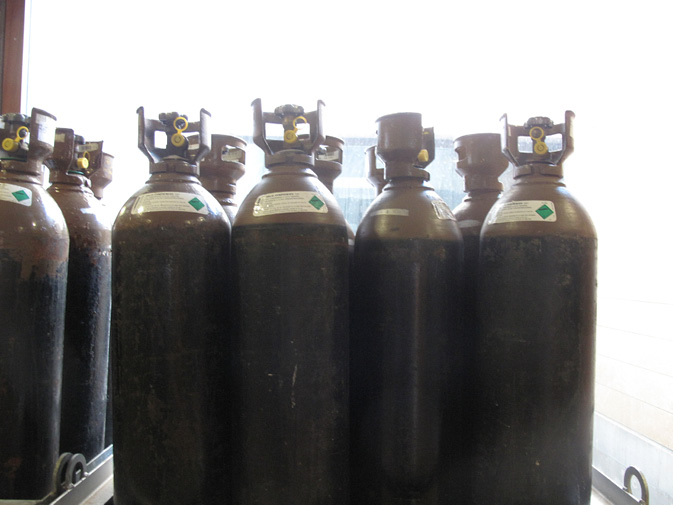
Fig. 2.1 Helium bottles used to inflate the balloons (photo: Nerea Calvillo)
Pushed by these uncertainties we framed the project as a ‘cosmopolitical experiment’ (Hinchliffe et al. 2003), in order to explore other ways of knowing that may enable a different composition of the world. For this purpose, we wondered how we could bring those invisible agents to the project, in the same way as Hinchliffe et al. had to decide how to encourage water voles – the elusive animals they were trying to detect – to inhabit their urban site. We did so by taking helium’s agency into account in material terms, learning about its material performance by engaging with the small differences between the gas’ properties and attributes, because ‘this openness to difference, which is borne out of a looser kind of sense, a knowing around rather than a knowledge of, is a vital means to allow for nonhuman knowledgeabilities’ (Hinchliffe et al. 2003: 653). Given this, we collected stories, experiences, and expertise about helium from domains outside architectural construction, making use of experts in corporate conference design and decoration, or drawing on our own experiences of childhood birthday parties or wedding catalogues. Having collated this knowledge, we then tested a number of small prototypes at home, counting weights, lifting times, trying out ways of sticking, attaching, gluing or tying them together; while beginning to understand how to attune three interrelated and processual aspects of aerostatic things: envelopment, inflation and buoyancy (McCormack 2009). Attunement was gradually achieved as the architects became more sensitive to very small changes in the quantity of helium injected when feeling the tension of the stretching polyamide, or to the unexpected choreography that the balloons initiated in response to subtle currents of breeze through, for example, an open door.
Instead of trying to limit the balloons’ capacities, we aimed to explore and exploit them: to create more entanglements and more means of addressing this gas by multiplying the agents involved to include not only humans – such as the many festival volunteers who joined the construction – but also other gases. Once on site we had to invite naturally occurring air to fill the balloons. Because air is heavier than helium, it could counteract the unpredictably strong lifting capacity of helium, in a dialogue where we, humans, became only mediators. The question now is whether these encounters with non-humans gave rise to new relations and modes of becoming between humans and more-than-humans. By observing what occurred in the design and construction process it could be argued that various changes occurred in how architecture is practised. Furthermore, the design process also gave rise to outcomes, or desired socialities, that were imagined and anticipated by the architects, whilst other socialites emerged unexpectedly.
Effects in the Making of Architecture
The first effect of taking atmospheric more-than-human agency into account is that it requires a conceptual and practical change in what architectural design means. Instead of being a process that defines how things are assembled prior to construction (or even during construction), taking air into account forces the whole process to become experimental. The object of design is the experiment itself and no longer a formal configuration. Instead of having to define every construction detail (which is the tendency towards which architectural practice keeps moving), what has to be defined are the conditions of experimentation, moving from drawings to protocols, a similar shift to that made in music in the 1970s by John Cage and his contemporaries. In the Polivagina the design of the experimental setting implied the definition of fixed elements (a number of balloon arches) that meant random filling, distribution of time, labour and learning processes for the students with whom we built the installation, and the acceptance of failure, even though stressful and painful, as part of the process. This move towards the design of an experimental setting demands a redefinition of what control means in design, and pushes to deal with uncertainty, making design a performative and emergent practice that blurs the boundaries between design and construction by substituting embodied movements in space for drawings and models.
New socialities between humans emerged during the construction process. While we were designing the experimental setting, helium’s unexpectedly strong lifting capacity destroyed our dome-like assemblages every night. Due to time constraints and our inability to govern the balloons, the social organisation of the team had to be adjusted and a redistribution of power and decision-making took place. Architects were no longer the ones explaining what and how to build, and they did not even coordinate tasks. The group dissolved into small, self-organised and ever changing experimentation groups that would make decisions and share their findings on their own.
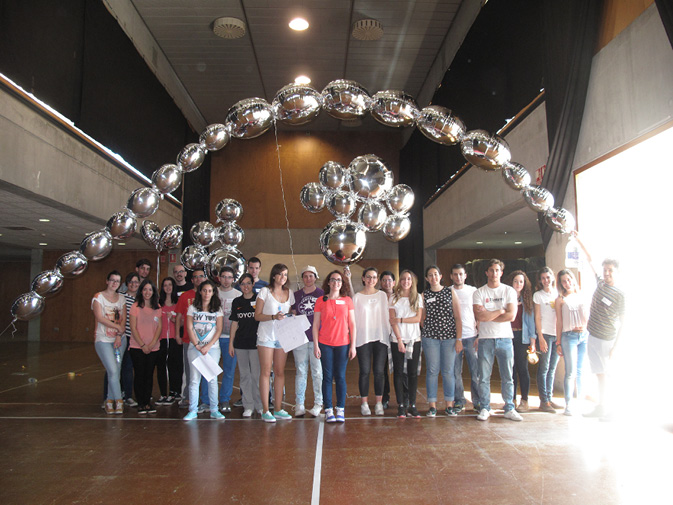
Fig. 2.2 Celebration of the construction of the first arch of the structure (photo: Nerea Calvillo)
And yet, although it may resonate with practices of collaborative design, participatory design or co-design, this architectural engagement was a different process: there was neither a shared understanding among the various stakeholders of what was taking place (e.g. Kvan 2000), nor an awareness of the organisational contexts in which this form of cooperative design (e.g. Suchman et al. 2003) was enacted. Furthermore, unlike in co-design or participatory design (e.g. Sanders and Stappers 2008; Wilkie 2011), we were not designing with future users in mind. In this cosmopolitical experiment decisions were not negotiated or agreed upon. Instead it became a distributed, untraceable decision making process, with no time for agreements or discussions, and which included aggressive moments, tears and a lot of stress. The division of labour hierarchies between designers and producers dissolved, since there were no experts; those involved acquired the appropriate knowledge, skills and experience through the process. Arguably, and if we think of this project in terms of involvement-in-design and human/more-than-human participation, we in fact co-designed with helium and air, by letting them speak as ‘we’ collectively adapted to one another.
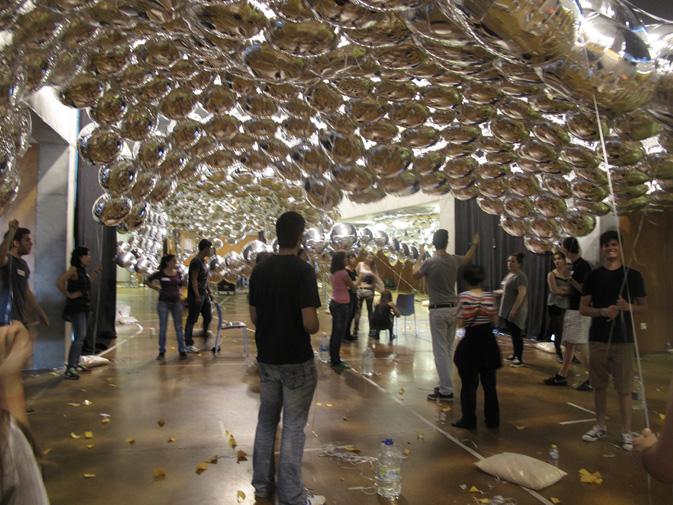
Fig. 2.3 Assembling the different domes (photo: Nerea Calvillo)
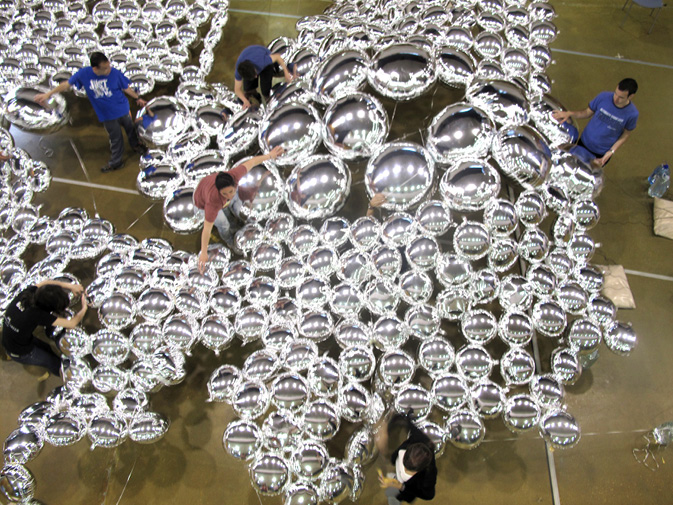
Fig. 2.4 Balloon assembling process (photo: Nerea Calvillo)
The fact that the team became a group of ‘makers’ as well as mediators with the air affected not only the social structure of construction but also the construction technique itself. Instead of hitting, breaking and assembling materials with tools, the (human) body became the main instrument to build with through embodied practices of touching, holding, catching, lifting, hugging and so on, with the help of domestic implements such as scissors, tape and string. If ‘the materiality of things becoming lighter than air is generative of distinctive modes of experiencing’ – or sensing – aerostatic space (McCormack 2009: 27), and relates to movement and a privileged point of view (Adey 2010; McCormack 2009), the sensing experience of being with air was a more intimate, non-representational and an embodied one. Echoing the specific movements that early twentieth century skyscraper construction workers developed in order to construct when hanging in the air (McCormack 2015a), we developed our own movements, not for being in the air, but for being with the air: holding it with our arms, pushing it with our knees, displacing it with our chest. Practices of material assemblage were replaced by practices of soft material care.
In this context, human bodies, as Hinchliffe et al. (2003) propose in their cosmopolitical experiment, have to learn to be affected (Latour 2004) by gases in order to become experimental instruments trained to measure, for instance, how much a 45 cm balloon lifts depending on its shape, in a similar fashion as the bodies of nineteenth-century chemists became epistemic instruments that provided specific types of knowledge (Roberts 1995). Indeed, since the strength or agility normally needed in other types of construction were not required, other types of bodies could participate in the assemblage of the installation, thus redefining who can participate in a construction process.
The cosmopolitical experiment also had other effects, such as expanding the number of agents involved and redistributing agencies and power relations, creating new socialities through this expansion. Again, the elevating force of helium, its resistance to being confined and its overall recalcitrance (Tironi and Calvillo 2016), caused the biggest conflicts and controversies. Very slowly, the 90 cm balloons pulled the whole structure up, until the highest parts of the domes reached a point where they triggered a laser detector in the ceiling, activating the fire alarm. This incident, three hours before opening, initiated a whole institutional conflict, bringing together the building security guards, institutional representatives of the cultural complex, the 90 cm balloons, the festival promoters and ourselves. The city council technicians proposed technical solutions to lower the structure, but the balloons had achieved equilibrium and we had lost control over them, so there was no way of bringing them down without dismantling the overall structure. Another option, bursting the bigger balloons, although acceptable from our side, was rejected by the promoters of the festival, who prioritised the aesthetics and decided to push for an administrative solution. So after two hours of phone calls and meetings the issue was handed over to the municipal and regional authorities, confronting security, aesthetics, budget and time.
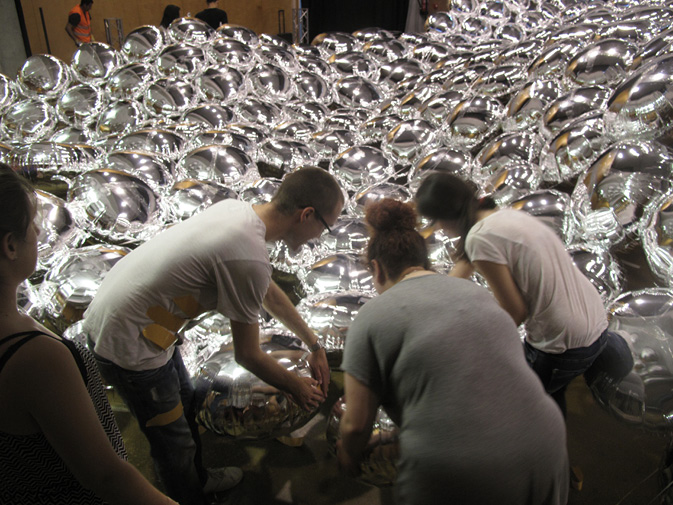
Fig. 2.5 Practices of embodied material care (photo: Nerea Calvillo)
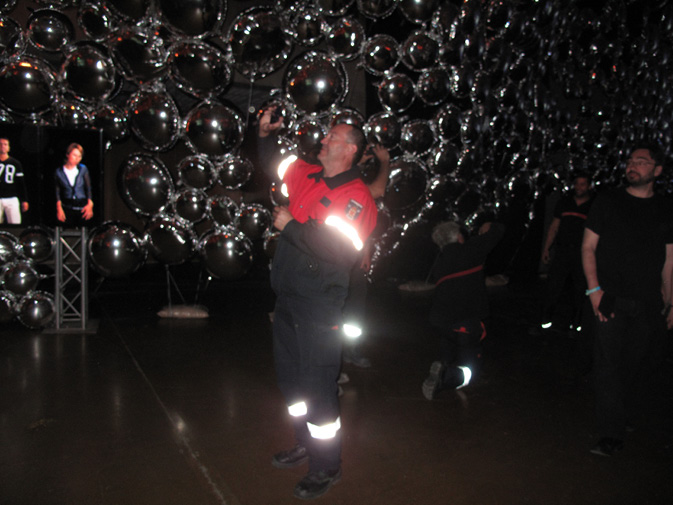
Fig. 2.6 Firefighters who replaced the smoke detectors, and who, in the process, took on the role of supervising the exhibition as well as taking selfies (photo: Nerea Calvillo)
The solution adopted was to replace the laser smoke detector with a whole crew of fire-fighters, who became the main supervisors of the building, the event and the installation. Interestingly enough, this not only redistributed power relations – as now the fire-fighters could decide what would or would not take place – but also transformed the newly-invested representatives of control and power into the public themselves, since the fire-fighters now took selfies, listened to the round-tables and watched the video art pieces themselves. So conflict can cause other forms of temporary sociality to emerge, expanding the number of agents involved by making people from different contexts come together and discuss issues such as public events regulations, institutional security protocols, fire-fighter budgets and so on. Throughout this process redistributions may take place and temporary publics be constituted.
The After-Effects: Atmospheric Attunements
In the above, we have discussed how the mediation between humans and more-than-humans through atmospheric elements in architecture turns the design and construction process into a cosmopolitical experiment, which affects how design is practised, and facilitates the design or emergence of certain socialities between humans and more-than-humans. Nevertheless, the design of socialities does not end in the production process, as the ‘inhabitation’ of the project also included the production of sociality. We now turn to an assessment of how the installation, once built and installed, was capable of stimulating and facilitating these socialities. To do this we will look at the installation as an experimental device in itself, ‘because experimental devices are not instruments for normative intervention, they have important moral and political capacities in and of themselves’ (Marres 2012: 3).
To detect these capacities, and following anthropologist Kathleen Stewart (2011), we can consider the socialities produced by Polivagina as ‘atmospheric attunements’. Kathleen Stewart’s concept is useful because it accounts for temporary, sometimes conscious and sometimes unconscious adaptations and transmissions of effects, not only between humans, but also with non-humans: ‘an intimate compositional process of dwelling in spaces that bears gestures, gestates, worlds. Here, things matter not because how they are represented, but because they have qualities, rhythms, forces, relations and movements’ (idem: 445). Stewart’s concept is also interesting because not only does it account for the production of effects, but it is also a kind of mattering or world-making that involves the air, the space, humans and others, and could be interpreted as producing socialities in a spatial foam.
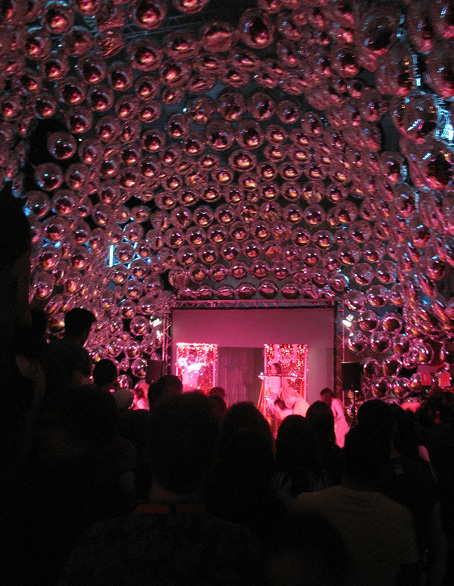
Fig. 2.7 Atmospheric attunements inside the Polivagina during a performance (photo: Nerea Calvillo)
Within the Polivagina, due to the unstable equilibrium between air and helium, the skin moved, crashed and became unstitched; it was alive, producing strangeness and fragility, constructing an atmosphere of attention and a collective sensation of participating in something ephemeral or not fully finished, a space in transition, holding the tension of a structure just about to self-disassemble in front of the eyes of the spectators. Yet this collective and indeterminate attunement (Anderson 2009) with gases is precisely why ‘proliferating little worlds of all kinds that form up around conditions, practices, manias, pacings, scenes of absorption, styles of living, forms of attachment (or detachment), identities, and imaginaries’ (ibid: 446) could be sensed.
My attention to the liveliness and world-making capacity of the air has, until now, left another materiality unattended: the balloon as a ‘device for making atmospheric things’ (McCormack 2015b), and more specifically, its polyamide. Here I want to argue that an attunement to this light film, with its mechanical strength, barrier properties and reflective silver finish, facilitated the constitution of publics around specific issues. Evoking Kathleen Stewart’s account of the different ways in which the colour red played a role in the material, affective and symbolic New England (Stewart 2015), the reflectivity of the silver-coloured material multiplied like a kaleidoscope throughout the space. It diffused its limits, reflected light, hid furtive hugs and distorted smiling faces; it multiplied Michael Jackson’s fans to infinity, reminded someone of Warhol’s Factory and made us desire Warhol’s Silver Clouds – such were the unexpected effects of this silver-coloured material. People who attend music festivals mostly go to listen to concerts, and yet this colour itself seemed to attract the music fans. The installation was identified as a ‘cool’ selfie location for self-representation and collectiveness, spreading by word of mouth and bringing people in. Visitors took pictures of themselves in different locations, identifying preferred spots depending on the intensity and colour of the light, the openness of the mesh or the ease with which they could photograph each other. This effect was designed and planned, as a sort of practical aesthetics, ‘engaged in thinking about and devising modes of sensory and affective apprehensions of the world’ (McCormack 2015b: 105), and as demarking ‘possible sites for experimenting with experience’ (ibid: 106). The intention was that, once inside, visitors would engage with the art pieces and join round-tables and performances, and this is indeed what happened. Visitors who had never been exposed to such contexts not only listened, but also engaged in the debates. The strangeness of the space and the fact that they inhabited it in their own ways empowered them, as one of the visitors mentioned, to ask, question and speak their minds. So the visitors, including festival-goers as well as cleaners, firemen, technicians and guards, thanks to some extent to the polyamide, engaged with various issues including, but not limited to fan emancipation and queer politics, producing ‘new collaborative spacetimes of experimental togetherness, new forms of association’ (ibid: 105). However, and importantly, this did not result in the constitution of a new parliament. This attunement took place at specific moments and through temporary and fragile engagements, beyond any possible control.
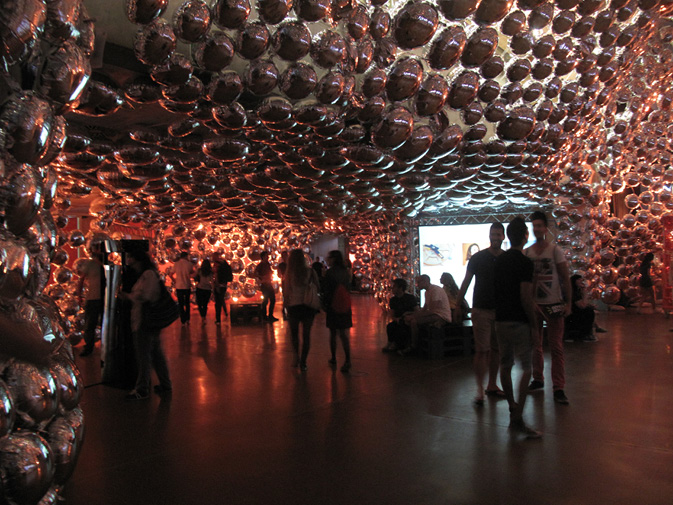
Fig. 2.8 Visitors attuning to the balloons and art installations (photo: Nerea Calvillo)
And yet other than human publics participated in Fan Riots. It can be argued that part of the success of this emergence of publics was due to the opening up of architecture to the ordinary and the banal. This was primarily effected by the presence of the balloons (see Topham 2002), but playfulness also entered with people’s transitions through the space, transforming the way in which art is usually engaged with: dancing in front of art pieces or kissing while watching videos about transgender experiences. Playful practices became recontextualised, hybridising institutionalised formats of cultural exchange. These hybridisation practices also took place the other way around: the displacement of the installation to the main scenarios produced the emergence of creative practices. While the installation was being dismantled, the balloons recovered their usual condition and were taken outside tied to a string and given out to the passionate fans dancing at the main stage. Unexpected (for an architectural installation) atmospheric attunements emerged here: people feeling the joy of a surprise gift, sharing the balloons as a collective treat among their friends, and creatively transforming them into hats, t-shirts or masks. Some people even took them home, expanding the physical network of the festival to domestic spaces.
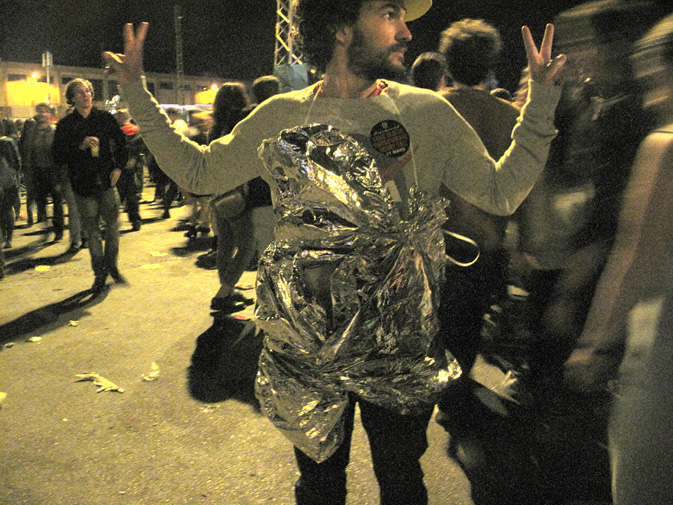
Fig. 2.9 Music fan posing with balloons repurposed as a dress (photo: Nerea Calvillo)
Conclusions
Working with air is an exercise in empirical speculation where STS is put to work in architectural practice and which involves developing a more processual way of understanding how socialities can be designed with buildings. By focusing on the material, technical and symbolic properties of gases, the design and construction process of the Polivagina and the socialities that emerged during its use, we have been able to identify how architecture is not only about buildings, but about all the various processes that constitute sociotechnical assemblages in permanent transformation, as well as what the installation could do in relation to the social. The movement, instability and flow of the air distributed hierarchical roles and created a collective affect of attention. The lightness of air enabled other bodies and practices to participate in the construction. The lack of history or technical specifications of balloons transformed the design process into a laboratory. It also enabled other publics to participate through a collective affect of celebration, introducing banality and the everyday into artistic and academic contexts.5 Last, but not least, helium’s resistance to being confined or domesticated brought about a controversy that increased the number of actors involved in the process, and transformed the process itself from a design and production context to an institutional and political one.
These socialities were not facilitated by a specific shape or spatial organisation, as other architectural projects have attempted, but by working with atmospheric materials. Even though in accounts of material participation it has been demonstrated that more-than-humans do not have inherent political and social agency, and that they can only acquire it in specific settings (Marres 2012), the case of the Polivagina shows that the agency of these gases became very active precisely because they were a dynamic, rare and unexpected guest.
As mentioned in the Introduction, the advantage of shifting from architecture as an object to dynamic atmospheres is twofold. The first is that it destabilises architectural practices, transforming them into cosmopolitical experiments. For some time, scholars interested in ANT have taken an experimental approach to buildings (Guggenheim 2009; Marres 2012). This chapter, however, demonstrates that atmospheric approaches to experimentation should take buildings-in-the-making into consideration and acknowledge the lack of order in which ideas, materials and actors are assembled. In the case of Polivagina the agency of air demands not only different recombinations of matter, humans and ideas, but different practices to do so. Thus, it is not about changing the order of materials (as in other accounts of architecture), or the order in which humans participate (as in practices of co-design, where users also participate in the initial design phases), but about finding new practices of construction and inhabitation, such as horizontal and self-organised construction teams or playful spectatorship. And yet this experimentation does not acquire its political capacities through variation, as Marres proposes for demonstrational devices (2012), but by embracing uncertainty, which has strong effects in architectural practice where the project cannot be predicted or previously defined, but is performative and non-representational.
The second advantage of shifting to dynamic atmospheres is that it opens up spaces for designing socialities (e.g. in the design and construction phases), and other types of affects with material entities (such as atmospheric attunements). But most importantly, it offers the possibility of designing desirable socialities with political and/or transformative capacities. Building with air calls for feminist or queer construction practices to which anybody can contribute and in which practices of assembly are replaced by practices of care. To better understand this relationship between more-than-humans and socialities I would like to propose one last speculation: that the cosmopolitical experiment may be better read as a process of conviviality, as a temporary co-habitation with more-than-humans. What if through Haraway’s Companion Species manifesto (2003), we imagine that helium and air became our companion species?
Gases are not dogs or any other conventional companion species, but thinking about them using Haraway’s framework may help us engage with two propositions. The first one is to think of our relationship with the air – a composition of gases and particles (and any other material, for that matter) – not as something out there to be managed, but as material with which we have intimate bodily and affective attunements (Choy 2010; Shapiro 2015). The second proposition is to see how in architecture there can be ways of engaging with more-than-humans other than by control and domestication, but instead through processes of mutual training and learning to be affected, where the value of the interaction does not depend on an economy of affection. Because as Haraway claims in her dog-human co-habitation, ‘dog’s value and life does not depend on the human’s perception that the dogs love them. Rather, the dog has to do his or her job’ (2003: 38), which is precisely what the helium balloons did. Even though we established some sort of physical and chemical affect, some sort of ‘animacy’ (Chen 2012) with helium balloons, they did not respond to our care, but carried on rising, destroying the installation. And yet temporary, fragile and instant moments of equilibrium can be achieved by constantly looking at what emerges from the relationship, which can challenge modes of sociality precisely because we are not used to them. Everyone needs to learn how to engage, and in this process new relationships can emerge. The question, paraphrasing Haraway, is ‘how might an ethics and politics committed to the flourishing of significant otherness be learned from taking air-human relationship seriously?’6 (Haraway 2003: 3).
So, inviting atmospheric more-than-humans to architecture’s table may be a means to propose a different view of how socialities can be facilitated with atmospheres. It can also contribute to STS by showing how working with air can invent the social in ways not possible without intervening with specific materials, and how socialities can be designed not through discourse or human-only interactions, but through human and more-than-human atmospheres. The level of design and control of this process is still uncertain, and requires more experimentation.
Acknowledgements
An early version of this paper was presented at the Third Ordinary Sociology Meeting in Madrid 2015. I am grateful for the comments made by the audience. I would also like to thank Marina Fernández, my courageous colleague throughout the cosmopolitical experiment; Iván López Munuera, for commissioning it and his support and trust in the project; and Miguel Mesa del Castillo and the team of architecture students of Alicante for engaging in the experiment with enthusiasm and patience. My gratitude also to the editors of this book and to the two anonymous reviewers for their helpful comments.
Notes
1 Architects’ conceptions of how to invent the social have shifted throughout history. For instance, in the Baroque period, architecture was a tool to represent power. With the advent of the new state and changes in society of the late nineteenth century and beginning of the twentieth, architecture had to accompany and represent societal changes such as modernisation and industrialisation, as Le Corbusier extensively discussed. In the 1970s a more modest wave in Europe focused on small scale architecture, exploring through design how small design decisions affect how people inhabit spaces (such as the work of Herzberger in the Netherlands or the Smithsons in the United Kingdom).
2 The name Polivagina was chosen as an allusion to Pussy Riot, but also in reference to the reformulation of the idea of the vagina as a contested space developed by feminists in the 1970s (see Munuera, 2014).
3 It was designed at C+arquitectos by Nerea Calvillo with Marina Fernandez, and built with a group of students from Alicante University architecture school at a workshop directed by Miguel Mesa del Castillo.
4 This is how ‘flexible’ buildings were conceived and built in the 1990s.
5 Which will demand, in fact, other ethical and aesthetic modes of evaluating architecture.
6 ‘Dog-human’ in the original.
References
Adey, P., Aerial Life: Spaces, Mobilities, Affects (London: Wiley-Blackwell, 2010).
Anderson, B., ‘Affective atmospheres’, Emotion, Space and Society, 2 (2009), 77–81.
Banham, R., The Architecture of the Well-Tempered Environment (London: The Architecture Press, 1969).
Braidotti, R., Nomadic Theory: The Portable Rosi Braidotti (New York: Columbia University Press, 2012).
Buchli, V., ‘Moisei Ginzburg’s Narkomfin Communal House in Moscow: Contesting the Social and Material World’, Journal of the Society of Architectural Historians, 57 (1998), 160–81.
Chen, M. Y., Animacies. Biopolitics, Racial Mattering and Queer Affect (Durham and London: Duke University Press, 2012).
Choy, T., ‘Air’s Substantiations’, in K. S. Rajan, ed., Lively Capital: Biothechnologies, Ethics and Governance in Global Markets (Durham: Duke University Press, 2010), pp. 121–54.
Dessauce, M., The Inflatable Moment. Pneumatics and Protest in ‘68 (New York: Princeton Architectural Press, 1999).
Farías, I., ‘Planes Maestros como Cosmogramas: La Articulación de Fuerzas Oceánicas y Formas Urbanas Tras el Tsunami de 2010 en Chile’, Revista Pléyade (2014),119–42.
Foucault, M., Vigilar y castigar: Nacimiento de la prisión (Madrid: Siglo XXI, 2010).
Guggenheim, M., ‘Building memory: Architecture, Networks and Users’, Memory Studies, 2 (2009), 39–53.
——‘From Prototyping to Allotyping’, Journal of Cultural Economy, 7.4 (2014), 411–33.
Haraway, D., Simians, Cyborgs and Women: The Reinvention of Nature (New York: Champman and Hall, 1990).
——The Companion Species Manifesto. Dogs, People and Significant Otherness (Chicago: Prickly Paradigm Press, 2003).
Hinchliffe, S., et al., ‘Urban Wild things: A Cosmopolitical Experiment’, Environment and Urban Planning D: Society and Space, 23 (2003), 643–58.
Kvan, T., ‘Collaborative Design: What is it?’, Automation in Construction, 9 (2000), 409–15.
Latour, B., We Have Never Been Modern (Cambridge: Harvard University Press, 1993).
——‘How to Talk About the Body? The Normative Dimension of Science Studies’, Body & Society, 10 (2004), 205–29.
——Reassembling the Social. An Introduction to Actor-Network-Theory (Oxford: Oxford University Press, 2005).
Lopez M., I., ‘Fan Riots’, Arquitectura: Revista del Colegio Oficial de Arquitectos de Madrid (2014), 20–5.
Marres, N., Material Participation: Technology, the Environment and Everyday Publics (London: Palgrave Macmillan, 2012).
Marres, N., and J. Lezaun, ‘Materials and Devices of the Public: an Introduction’, Economy and Society, 40 (2011), 489–509.
McCormack, D. P., ‘Atmospheric Choreographies and Air-Conditioned Bodies’, in V. Hunter, ed., Moving Sites. Investigating Site-Specific Dance Performance (London, New York: Routledge, 2015a), pp. 79–94.
——‘Devices for Doing Atmospheric Things’, in P. Vanni, ed., Non-Representational Methodologies (London, New York: Routledge, 2015b), pp. 89–111.
——‘Aerostatic Spacing: on Things Becoming Lighter than Air’, Transactions of the Institute of British Geographers, 34 (2009), 25–41.
Roberts, L., ‘The Death of the Sensuous Chemist: The “New Chemistry” and the Transformation of Sensuous Technology’, Studies in History and Philosophy of Science, Part A 26 (1995), 503–29.
Sanders, E. B. N., and P. J. Stappers, ‘Co-creation and the New Landscapes of Design’, CoDesign, 4.5 (2008), 5–18.
Shapiro, N., ‘Attuning to the Chemosphere: Domestic Formaldehyde, Bodily Reasoning, and the Chemical Sublime’, Cultural Anthropology, 30 (2015), 368–93.
Sloterdijk, P., Esferas III (Barcelona: Siruela, 2005).
Star, S. L., ‘The Ethnography of Infrastructure’, American Behavioral Scientist, 43 (1999), 377–91.
Stewart, K., ‘Atmospheric Attunements’, Environment and Urban Planning D: Society and Space, 29 (2011), 445–53.
Suchman, L., J. Blomberg, and R. Trigg, ‘Back to work: Renewing Old Agendas for Cooperative Design’, in M. Kyng et al., eds, Computers and Design in Context (Cambridge: MIT Press, 2003), pp. 267–87.
Tironi, M., and N. Calvillo, ‘Water and Air: Territories, Tactics and the Elemental Textility of Urban Cosmopolitics’, in I. Farías and A. Blok, eds, Urban Cosmopolitics (London, New York: Routledge, 2016), pp. 207–24.
Topham, S., Blow Up. Inflatable Art, Architecture and Design (London: Prestel, 2002).
Vanderburgh, J., D. Russell and W. Ellis, ‘A Dialectics of Determination: Social Truth-Claims in Architectural Writing, 1970–1995’, in A. Piotrowski and J. W. Robinson, eds, The Discipline of Architecture (Minneapolis: University of Minnesota Press, 2001), pp.103–126.
Wakeford, N., ‘Beyond the Individual. Replacing the Network Society with Social Foam: a Revolution for Corporate Ethnography?’, Ethnographic Praxis in Industry Conference Proceedings (2011), 240–55.
Wilkie, A., ‘Regimes of Design, Logics of Users’, Athenea Digital, 11 (2011), 317–34.
Yaneva, A., Made by the Office for Metropolitan Architecture: An Ethnography of Design (Rotterdam: 010 Publishers, 2009).